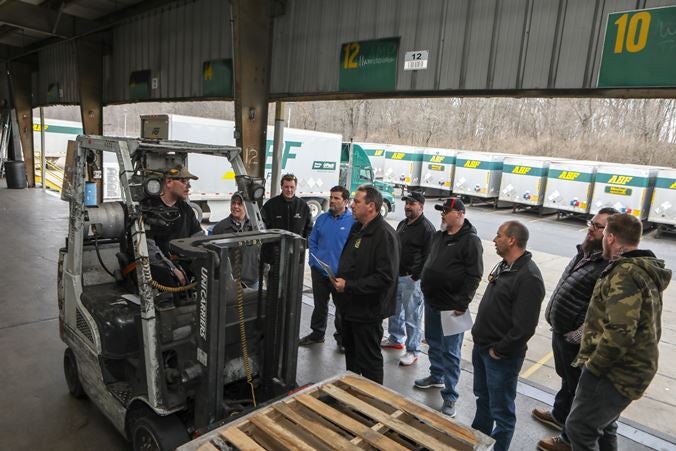News
Journey to Drive

Anyone who works in trucking or follows the transportation sector knows there is one topic that has dominated the industry in recent years: the persistent shortage of drivers.
While the effects of deregulation are largely to blame for the decline in drivers, as fewer workers are attracted to the harsh demands of jobs in the nonunion sector, the shortage has led to all kinds of proposed solutions including the use of new technology to fill the gap in the labor supply.
But there is another remedy, and it draws from centuries-old practices in the skilled trades: the apprenticeship. Today, Teamsters are paving a new road for countless workers who want to build careers in the transportation industry. Teamsters have developed a number of apprenticeship programs at locals and Joint Councils, especially in the construction industry, but the new Teamsters Apprenticeship Program is the first national effort by the union that is focused on the transportation industry.
“This program is designed to promote the craft and train people to build strong middle-class careers in the transportation industry,” said Lamont Byrd, Director of the Teamsters Safety and Health Department.
Since it was launched in 2015, more than 240 CDL-A apprentices have been trained in the program.
The goal is to train more than a thousand dock worker/drivers in five years. The Safety and Health Department worked closely with ABF as well as the Teamsters Freight Division to put together the curriculum of the apprenticeship program.
DOL Certified
Like many freight companies, ABF has been hit by the driver shortage. So the company turned to the Teamsters for help in bringing new drivers on board. In addition to ABF and DOL, Teamsters have partnered with community organizations focused on outreach to disadvantaged communities in order to recruit young workers into the apprenticeship program.
At 18 years old, an apprentice dock worker is registered with the DOL when they enter the program. Their progress is monitored by instructors.
After 144 hours of dock operation training, they go through 2,690 hours of supervised work experience. Once they are of age, they begin training to upgrade to a CDL. This involves another 240 hours to train for their CDL-A licenses, followed by another 2,690 hours of work experience.
“You have young people on the one hand who are trained to do the work and, on the other hand, you have companies that are struggling to find drivers. The apprenticeship program is building a bridge between the two,” added Chee Chang, a program manager with the Teamsters Safety and Health Department who manages the worker trainings and helped design the program.
The Teamsters secured federal grant funding to support the development of the apprenticeship program, which will be sustained by employer contributions. And the union is also looking to apply for state-level grants to further support the effort.
New Blood
A checklist…that’s how some current dock workers at ABF described the extent of their training before the Teamsters Apprenticeship Program was introduced. That checklist is now a 157-page manual, written by the Teamsters Safety and Health Department in consultation with the company.
“It’s important to make a good connection with younger folks so they can carry on the work and keep this industry going,” said James Mullens, a 24-year ABF dock worker and member of Local 957 in Dayton, Ohio. Mullens joined more than a dozen other ABF dock workers at a training at Local 776 in Harrisburg, Pa. in March to sharpen his skills as instructor to new dock worker apprentices.
“This program really got me thinking more about how we talk about the union with new hires and figure out better ways of teaching people who are just starting in the industry. And with the outreach at job fairs and high schools, I think it can help lead to a better recruitment system for dock workers and show that this is actually a good job with good benefits,” said Lindsay Mandelik, who has been working on the docks at ABF in Dayton for five years. She also attended the “Train the Trainer” event in Harrisburg.
By turning back to the practices of earlier generations, Teamsters may help turn back the trend of the driver shortage and jumpstart a new generation of union truck drivers.
Thousands of Teamsters Participate in Safety and Health Trainings
Teamsters Safety and Health provides a range of resources and training for members across many trades and industries. In 2018, more than 7,400 workers (including more than 2,000 Teamster members) participated in training programs held around the country.
Trainings are conducted through an affiliated consortium of 12 Teamster training centers as well as the Rail Workers Hazardous Materials Training Program, which represents nine rail unions.
Covering everything from construction to transportation to warehouse to airline professions, Safety and Health programs focus on training workers in underserved populations and providing members with the skills they need to work safely on projects in their communities.